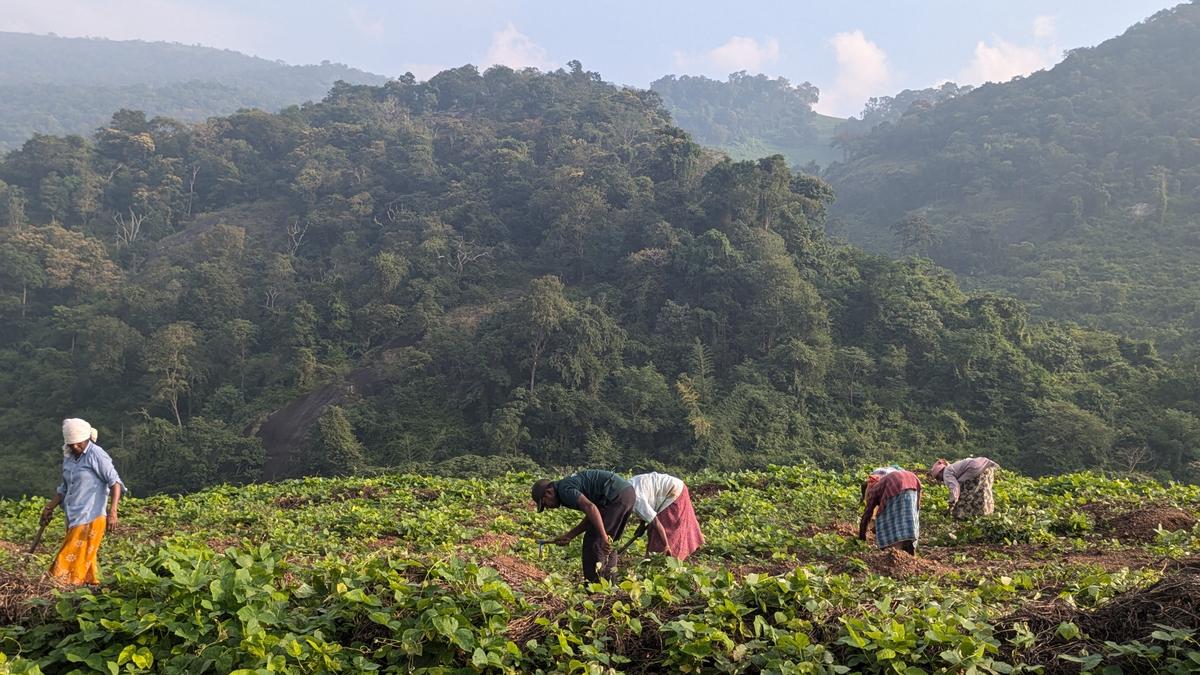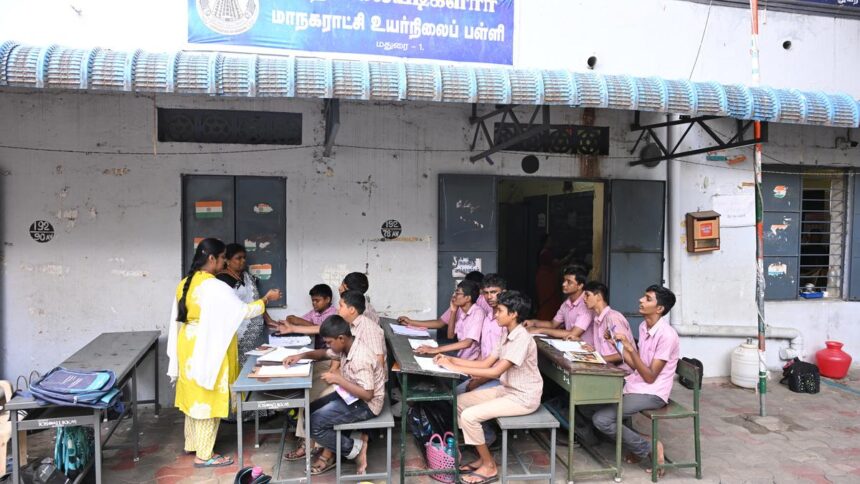
Locals engaging in the process of clearing Mucuna Bracteata in Kodayar region
| Photo Credit: SPECIAL ARRANGEMENT
Tamil Nadu Forest Department has intensified the weeding of the invasive crop Mucuna bracteata spread across the rubber plantations and forest regions of Kanniyakumari district. As the crop has already spread over hundreds of acres in the region, swift actions are being taken in weeding the crop.
Mucuna Bracteata, a leguminous vine which is said to be introduced to the rubber plantations of Kanniyakumari district over 20 years ago for its weed suppressing and nitrogen fixing abilities.
But over the period of time, its tendency to grow rapidly in sunlight has resulted in affecting the natural vegetation and bio diversity of the region, which was the major fodder source for the animals in the buffer zone of lower Kodhayar. This includes places such as Pechparai, Kulasekaram, Keeriparai, Kaliyal, Kadalayulumoodu and Arukaani regions.
The study, which was conducted by Kanniyakumari Nature Foundation (KNF), brought attention to the invasive creeper that is affecting the biodiversity of the region. Vinodh Sadhasivan of KNF said, “After explaining the impact caused by this invasive crop, actions were taken last year in weeding in partnership with the Forest Department.” He added that the weeding has been taken up for 10 hectares of land as a pilot project, involving the local communities.
Mr. Sadhasivan further noted that taller plants such as bamboo grass were planted in the weeded region, as the shade provided by these plants will further prevent the suppression of the growth of Mucuna bracteata, since they cannot survive without direct sunlight. “We are also conducting regular maintenance in the weeded areas to check the results and expand the project further,” he noted.
These invasive species are known to escape the plantation boundaries and invade the natural habitats of the regions. Though it improves the soil nitrogen, it also competes for sunlight, nutrients and other essential factors which will affect the nearby cash crops, especially in the early stages.
E. Prashanth, District Forest Officer, Kanniyakumari said, “As far as the Kanniyakumari Wildlife Sanctuary is concerned there is no infestation of Lantana Camara or Prosopis Julifora. However, the Mucuna Bracteat remains a huge concern, due to its ability to grow rapidly.”
He added that efforts have been intensified to clear this invasive species under the TBGPCCR fund. “As there is no standardized method for the removal of this invasive species, we have carried out a pilot project using a manual method without using weedicide, which will affect the animals consuming the plant,” he mentioned.
Published – August 08, 2025 08:46 pm IST




















